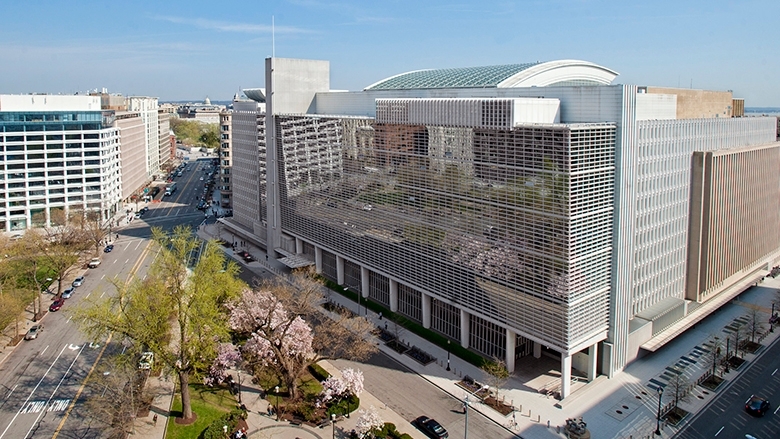World Bank Boosts Jobs for 1.6M Women in Tamil Nadu – Mirage News

World Bank Launches Program to Enhance Women’s Employment in Tamil Nadu, India
Introduction
On June 23, 2025, the World Bank’s Board of Executive Directors approved a new initiative aimed at improving access to quality jobs for 1.6 million women in Tamil Nadu, India. This program focuses on increasing female labor force participation in the state, aligning with several Sustainable Development Goals (SDGs), particularly SDG 5 (Gender Equality), SDG 8 (Decent Work and Economic Growth), and SDG 10 (Reduced Inequalities).
Context and Challenges
- Tamil Nadu is experiencing rapid urbanization, with growing employment opportunities in industries such as electronics and automobiles.
- The state currently has one of the highest female labor force participation rates in India but still lags behind male participation by 32 percentage points.
- Women are predominantly employed in agriculture and low-paying informal sectors.
- To achieve its goal of becoming a trillion-dollar economy by 2030, Tamil Nadu aims to increase female labor force participation by addressing employment constraints and enhancing women’s readiness and incentives to join the workforce.
The Tamil Nadu Women Employment and Safety (WESAFE) Program
With a $150 million investment from the International Bank for Reconstruction and Development (IBRD), the WESAFE Program will:
- Provide skills training and career support to over 600,000 women.
- Offer incubation support to 18,000 women entrepreneurs to establish their businesses.
- Expand enabling services including safe hostels, creche facilities, elderly care, safe transportation options, and hotline call-centers for reporting harassment and abuse.
Alignment with Sustainable Development Goals
- SDG 5: Gender Equality – The program promotes women’s economic empowerment by improving safety, access to finance, and entrepreneurship opportunities.
- SDG 8: Decent Work and Economic Growth – By enhancing skills and creating quality job opportunities, the program supports inclusive economic growth.
- SDG 10: Reduced Inequalities – The initiative targets reducing gender disparities in labor force participation and income.
- SDG 11: Sustainable Cities and Communities – Through improved urban services such as safe transport and housing, the program contributes to sustainable urban development.
Institutional Strengthening and Partnerships
The program will strengthen state capacity and institutional frameworks by:
- Supporting the development of a common results framework and the rollout of Tamil Nadu Women’s Policy.
- Facilitating regulatory frameworks to attract investments that expand female labor force participation and women entrepreneurship in non-farm sectors.
- Encouraging collaboration with industry associations, educational institutes, and private organizations to improve housing and mobility options for women workers, students, and entrepreneurs.
Financial Inclusion and Private Sector Engagement
A state-level platform, supported by private capital, will be established to:
- Enhance women’s access to finance.
- Raise awareness of financial products such as loan guarantee funds and microgrants for women entrepreneurs.
Program Financing and Terms
- The $150 million loan from the IBRD has a maturity period of 25 years with a 5-year grace period.
Conclusion
By focusing on skill development, financial access, and enabling services, the World Bank’s WESAFE Program aims to empower 1.6 million women in Tamil Nadu, contributing significantly to the state’s economic growth and the achievement of multiple Sustainable Development Goals.
1. Sustainable Development Goals (SDGs) Addressed or Connected
- SDG 5: Gender Equality
- Focus on increasing female labor force participation and women’s empowerment in Tamil Nadu.
- Improvement of safety and enabling services for working women.
- SDG 8: Decent Work and Economic Growth
- Creation of quality jobs and skills training for women.
- Support for women entrepreneurs and formalization of employment.
- SDG 9: Industry, Innovation, and Infrastructure
- Support for women entrepreneurs through incubation and access to finance.
- Collaboration with industry and private sector to enhance employment opportunities.
- SDG 11: Sustainable Cities and Communities
- Improvement of safe transport, housing, and mobility options for women workers and entrepreneurs.
2. Specific Targets Under Those SDGs Identified
- SDG 5: Gender Equality
- Target 5.5: Ensure women’s full and effective participation and equal opportunities for leadership at all levels of decision-making in political, economic, and public life.
- Target 5.2: Eliminate all forms of violence against women and girls, including ensuring safe working environments.
- SDG 8: Decent Work and Economic Growth
- Target 8.5: Achieve full and productive employment and decent work for all women and men, including young people and persons with disabilities.
- Target 8.3: Promote development-oriented policies that support productive activities, decent job creation, entrepreneurship, and formalization of micro-, small- and medium-sized enterprises.
- SDG 9: Industry, Innovation, and Infrastructure
- Target 9.3: Increase the access of small-scale industrial and other enterprises, particularly women entrepreneurs, to financial services and integration into value chains and markets.
- SDG 11: Sustainable Cities and Communities
- Target 11.2: Provide access to safe, affordable, accessible and sustainable transport systems for all, improving road safety, particularly for vulnerable populations such as women.
3. Indicators Mentioned or Implied to Measure Progress
- Female Labor Force Participation Rate
- Measurement of the percentage increase in female labor force participation in Tamil Nadu compared to male participation rates.
- Number of Women Receiving Skills Training and Career Support
- Tracking the 600,000 women targeted for skills training and career support under the program.
- Number of Women Entrepreneurs Supported
- Counting the 18,000 women entrepreneurs receiving incubation and financial support.
- Availability and Usage of Enabling Services
- Monitoring the expansion and utilization of safe hostels, crèche facilities, elderly care, safe transport, and hotline call-centers.
- Access to Finance Indicators
- Use of loan guarantee funds and micro grants to measure access to financial products for women entrepreneurs.
4. Table of SDGs, Targets, and Indicators
| SDGs | Targets | Indicators |
|---|---|---|
| SDG 5: Gender Equality |
|
|
| SDG 8: Decent Work and Economic Growth |
|
|
| SDG 9: Industry, Innovation, and Infrastructure |
|
|
| SDG 11: Sustainable Cities and Communities |
|
|
Source: miragenews.com








